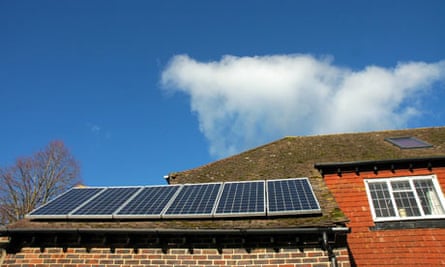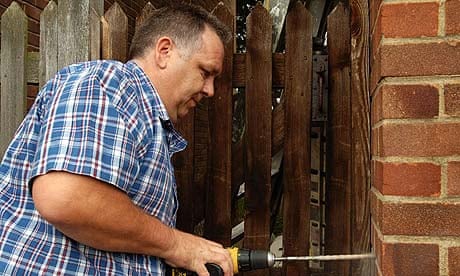We're looking to give an online home to any homeowners planning an eco-renovation. If you'd like to find out more, please email us
For all the talk about the need to "green up" our homes, there still seems to be a tremendous amount of frustration and confusion in the air about what exactly this entails.
It's all well and good if you have pots of cash and a blank plot of land from which to sculpt and craft your dream off-grid eco-home, powered and watered by renewable sources, and built from sustainable and recycled materials. (If you want to look – and, frankly, laugh – at what claims to be the world's most expensive "eco home", cast your eyes on this $29m monstrosity in Florida.)
But this is a reality for less than 0.1% of the population. The other 99.9% of us don't have access to the money required, and - more significantly - are lumbered with working out how to "eco[retro]fit" an existing building. As is common in Britain, that existing building can be more than 100 years old.
The Victorians, for example, were a clever bunch, but when they were throwing up housing across Britain they were thinking about how to build solid houses quickly and cheaply. They weren't too bothered about U-values and air leakage rates.
This mentality has largely remained in place right up to today's generation of builders. However, as concern grows about how we reduce both carbon emissions and ever-rising energy bills, and as building regulations have greatly tightened over the past few years, many of us have started to look at how we can improve the eco credentials of our current homes.
It's easier said than done, as I have recently been finding out. A couple of years ago my family and I moved back to Cornwall, close to where I grew up, and bought an old, run-down farmhouse with the hope of renovating it.
The place hadn't been properly lived in for a few years, didn't have any central heating, and, well, it needed a lot of TLC. This was both a frustration and an opportunity. It was going to take time and money to get it right, but it might also give us the chance to incorporate some improvements that would reduce the building's carbon emissions.
Thick granite walls are fairly immovable objects. They were staying put. But just about every other part of the building presented opportunities for improvements. Perhaps the greatest of them all was the roof.
We intended to convert the large attic into two rooms and, because the roof needed fixing anyway, we were forced by building regulations to greatly improve the insulation. But we also took the decision to install a couple of solar panels for hot water. The pitched roof pointed due south and it seemed a waste not to grasp upon this good fortune.
All in, the panels and the related plumbing cost about £3,000. We expect they will take a decade to pay for themselves, but last summer – even though the weather was by and large dreadful – we estimate that at least 90% of our hot water was provided free. Even on a sunny winter's day I see the little display panel indicating that the panels' water pump is working.

The other big systematic change to the home was installing central heating. When we bought the house it had a dilapidated oil-fired range in the kitchen and electric night storage heaters in some of the rooms. This all came out and we fitted a modern gas-fired combination boiler, which feeds both the new radiators and the super-insulated water tank. (Water seems to stay warm - hot, even - in there for days.)
We also installed two wood-burning stoves downstairs. This allows us to operate a zonal-heating system whereby in winter the radiators come on for an hour or so in the morning when the kids are getting ready for school, and again for a couple of hours in the late afternoon in the run up to their bathtime. Each floor has its own thermostat and timer, giving us greater control.
By 7pm, the heating shuts down and we light the stove in the sitting room (if we haven't lit it earlier, depending on how cold it is outside). This way we have found we can greatly reduce our fuel use. It means thinking ahead a little about how you use each room, but it means we don't have to heat up the whole house unnecessarily.
In an attempt to reduce draughts and heat leaks, we have also tried to fit insulation (dirt cheap from most DIY stores) around the house's single-pane sash windows. This seems to have a positive impact, but if we ever get the money together this would be an area I would like to tackle properly as it feels a bit piecemeal at the moment.
This gives a quick flavour of some of the things we have tried to do in the home over the past couple of years, but above all we've found that you soon reach the conclusion that perfection is unobtainable and that you are invariably constrained by both the building's limitations and your own budget.
It's often simply a case of doing the best you can – no matter how many times you have longingly thumbed your way through the Green Building Bible for guidance and inspiration.
And because these frustrations are now so commonplace, the Guardian is looking for five volunteers to share their own experiences of undertaking an eco renovation. It could be in the form of a web diary, or simply the occasional video blog.
Above all, we want to host a community of like-minded eco-renovators willing to share their tips, experiences and anxieties. So if you fancy taking part, please email Adam Vaughan with your details, or simply start sharing your thoughts by posting them below.

Comments (…)
Sign in or create your Guardian account to join the discussion